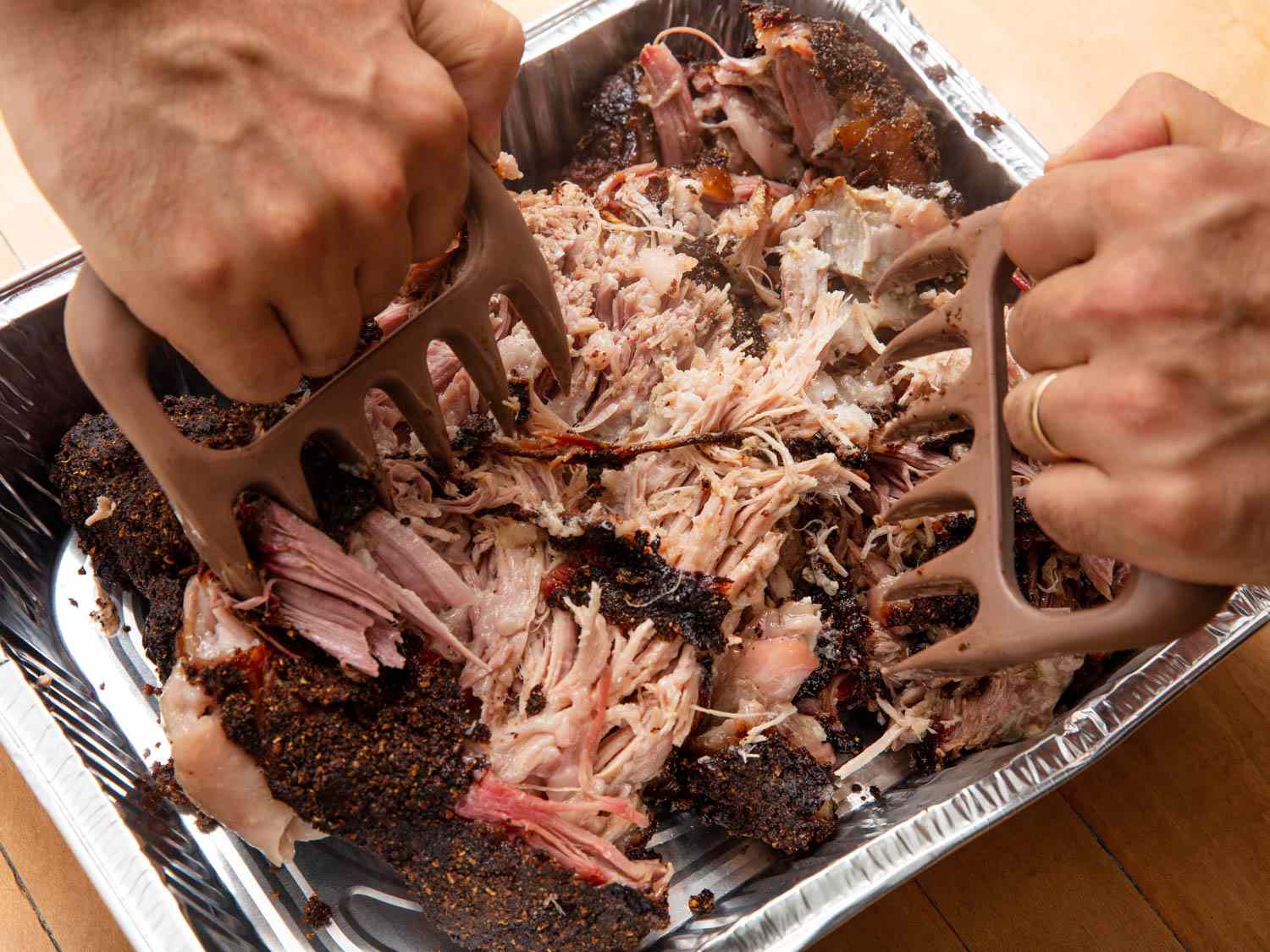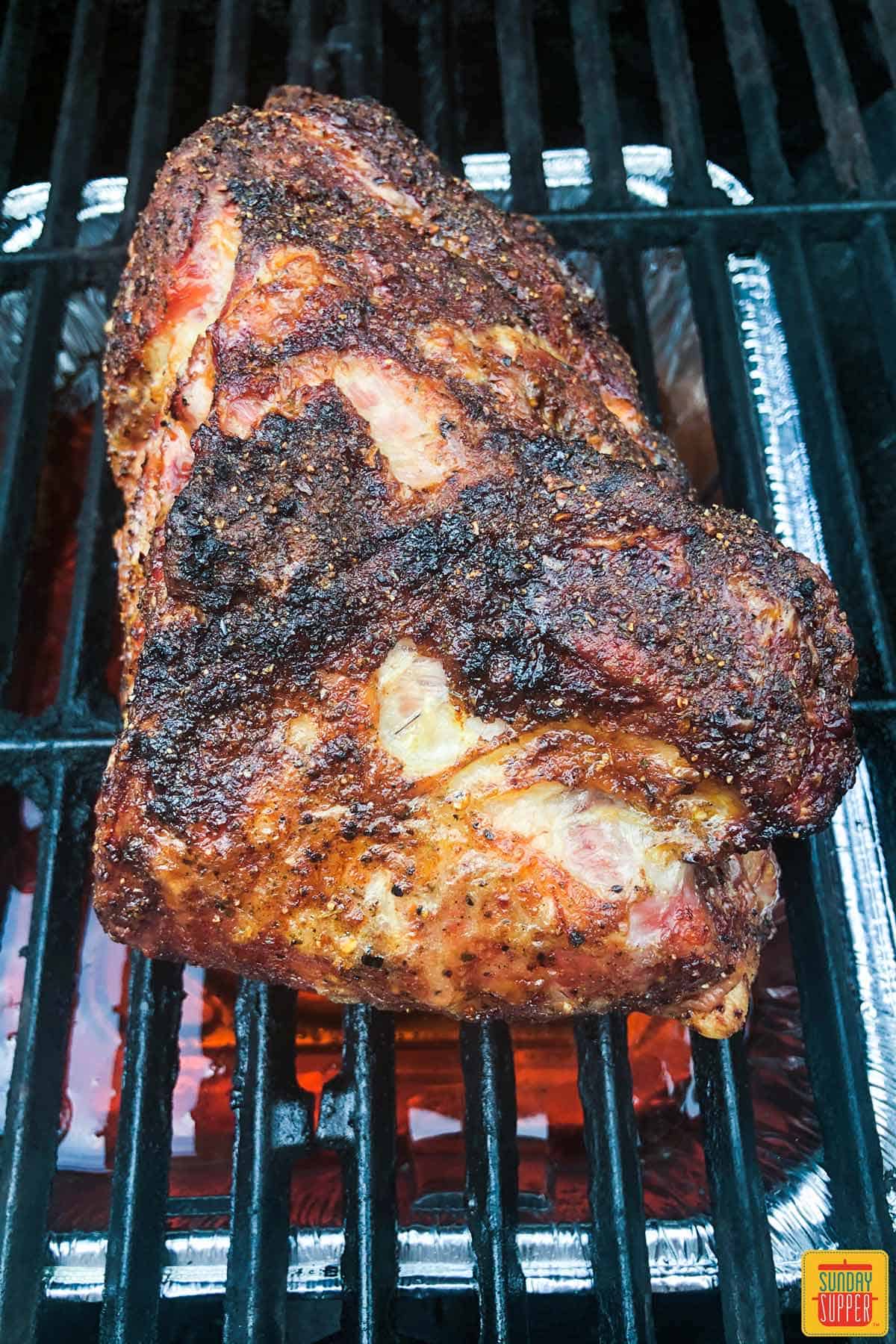
Cook your food on coals for maximum heat. A charcoal grill with wide open vents will produce a higher heat. If the flames are large, there is enough oxygen. If your flames are low, there is not enough oxygen. If your food is burning quickly, you should close the vents. The higher the flames, higher the heat. Low flames indicate that you are not using enough charcoal.
Ventilation
A charcoal grill will have an intake vent. The intake vent is designed to provide oxygen to the combustibles. This is the source for the grill's "fuel." The more open the vent is, the more oxygen can enter the grill and therefore raise the temperature. A key part of controlling the temperature is controlling the oxygen level.
The main method of controlling the temperature is to use the charcoal grill’s intake vent. Look for two arrow marks near the vent. The vent is considered open if the arrows point towards half-open. The top cover contains the oxygen- and exhaust dampers. You can adjust the heat and intensity of your fire by opening or closing the top lid. In other words, the more open the vent, the hotter your fire will be.
You should always open the vents of your charcoal grill as much as you can. Leaving the vents open can result in hotter and faster burning charcoal. On the other hand, shutting the vents can reduce the internal temperature of the grill and limit the amount of smoke. The bottom vent must be opened while the top one should stay closed. If you smell smoke from your cooking, open the bottom vent just a little. You can always close the bottom vent completely or halfway if it doesn’t.
The outtake ventilation is another component you need to think about. The outtake valve pulls oxygen from your air. Properly venting charcoal and wood fires will prevent them from smothering the fire. In order to maintain the proper temperature, it is best to adjust the intake valve before cooking. If you're a beginner, start with the intake vent and work your way up from there.
Exhaust vent
An exhaust vent is located on a charcoal barbecue and controls how much air can enter the cooking area. A partially or fully open vent will allow more oxygen to enter the cooking area. This will lead to a bigger fire. Vents that are closed will allow less oxygen to the cooking area. This can lead to a smaller fire and a starved fire. There are many factors that must be taken into account when controlling the exhaust vent.
An exhaust vent in a charcoal grill helps to balance oxygen in the bottom with oxygen in top. The key to cooking the perfect hamburger is having control over these two fuels. Charcoal grill exhaust vents (sometimes called dampers) are not chimneys that let out heat but rather allow you to regulate the temperature. Properly using the vent will improve the flavor and maintain the tenderness of your food.
The exhaust vent of a charcoal grill should be the most important. To get the best heat out of the charcoal, cook it directly on the coals. The 2-zone method can be used to regulate the temperature. The two-zone method lets you move the food around by cooking in sections. The top vent can be opened to regulate the flame if you don't have the time to move the food around.
The intake damper is the second component of a charcoal grill exhaust pipe. This vent is located in the bottom of the charcoal grill. To burn wood and charcoal, oxygen is required. The vent can be opened to decrease the oxygen requirement. The intake damper is normally located at the bottom. When one vent is open, temperatures can rise. This makes the fire more hot and allows you cook more food with less effort.
Do not take

Charcoal grills let air in through an intake port. The grill will heat up, allowing oxygen to enter. An effective charcoal grill intake damper allows air to flow into the grill. Keeping the intake damper open allows more oxygen into the grill, while a closed vent restricts oxygen in the system. Too much air can cause the coals to heat up and burn food. The coals will die if the damper is closed.
Although they are sometimes called intake or exhaust vents, dampers and vents are actually the same thing. An intake damper can found at the bottom of a charcoal-grill, while an exhale vent is found at the top. An exhaust vent and an intake damper are placed on the charcoal grill to draw in oxygen. To ensure the proper temperature of your food, keep them open. The charcoal grill will produce more heat than it can handle if it's hot.
The temperature can be controlled by adjusting the charcoal grill intake damper. The more open the vent, the more oxygen can enter, and the less air, the cooler the grill will be. The lid of most charcoal grills has one damper and the bowl the other. The damper affects the temperature of charcoal grills, so make sure to leave it open for the best smoke flavor. The charcoal grill intake damper can take anywhere from 10-20 min to settle.
The charcoal grill intake damper prevents the fire spreading beyond control. Without a lid, charcoal can be volatile and will burn to ashes. One of the easiest ways to put out a charcoal grill is to close the vents, as they prevent drafts, smother the fire, and control the temperature. This is also known "fire triangle" and is a way to regulate the temperature.
Cleaning the grill grates while still warm
It's easier to clean your grill grates while they're still warm than to use harsh chemicals or metal tools. You will need to soak your grates in a solution consisting of one cup of vinegar and one-half cup of baking soda. After letting the mixture sit for approximately an hour, scrub the grates well with a steel wool pad or a scouring mat. This method is safer, more efficient than other chemical solutions, and better.
After each cooking session, clean the grates of your grill. Clean the grates with a high-quality stainless metal brush. To remove food that has been browned, you can use either a separate scraper (or the built-in one) to scrape it off. If bristles get loose, you can take them out. After you have cleaned the grates well, you can rinse and dry them.
Cast-iron grates should be washed with soap and water. If the grates have a heavy buildup of grease, it could cause them to lose their non-stick properties. You must clean them well if you want them to remain in good condition. This is also true for porcelain grill grates. They should be washed with soap and water. Vegetable oil can be used instead of a chemical cleaning solution to avoid rusting.
To scrub your grill grates, you can also use aluminum foil. Crumple up the aluminum foil into a circle that you can handle with tongs. You can remove food from the grill grates by using a brush. Before wiping down the grill, let it cool off. This will ensure that the grill is clean. A charcoal grill can be left on after cooking for a few seconds.
Examining the vents

A charcoal grill's vents regulate the amount of oxygen that reaches the charcoal as well as the temperature of the interior. Knowing how to properly use the vents will help you master the art of charcoal grilling. This will help you control the temperature, flavor and aroma of your food. To prevent a flame, close all ventilations. Allow the grill to cool completely before you store it.
It's common for a charcoal grill's lid to rust shut if heavy rain has recently fallen on the area. Rust can make it difficult for the grill's vent to open, allowing oxygen to enter. This can lead to semi-cooked meals or semi-burnt carbon. The grill's ventilations are crucial for proper operation. They are essential to the grill's proper functioning. Regular inspection will prevent any issues and enhance your cooking experience.
A vent's role is to regulate the amount of oxygen that enters the grill and how much oxygen escapes. The bottom vent is important in winter cooking as less oxygen means that food cooks quicker. A vent's function is to regulate the temperature. You can replace the vent with an aluminum pan that has a similar effect. It won't alter the temperature as much, but it will help you cook more food.
The top vent can also be called the exhaust damper. Properly using the damper for charcoal grilling is vital. If it's closed too much, the fire will be too hot and you'll get too much smoke. The proper settings are crucial to achieve the desired smoke flavor. The vent damper should also be adjusted to match the type of food being prepared. The type of charcoal grill used should also be taken into account.
FAQ
What should a beginner cook first?
Start cooking something simple, such as pasta, rice, soup. Learn how to cook with a recipe book, YouTube video or other resources. Cooking is fun when you do it with someone else. Enjoy cooking with your family, friends, or both.
What can I learn about cooking?
You can find cooking classes all across the country. There are many schools that offer courses in pastry, baking, and wine tasting. You can learn more about how to cook by enrolling in a class at either a local vocational school or community college.
What equipment do I need to cook?
You don't require any special equipment to learn how to cook. However, it can be easier to use the right tools. For example, a knife could be used for pasta making or a whisk would be better than a hand mixer for whipping egg whites to stiff peaks. Having the right tools makes cooking less intimidating and allows you to start faster.
Statistics
- In the United States, the category is estimated at $23.2 billion annually and is growing faster than the market. (washingtonpost.com)
- On average, chefs earn $58,740 a year, according to the BLS. - learnhowtobecome.org
- The median pay for a chef or head cook is $53,380 per year or $25.66/hour, according to the U.S. Bureau of Labor Statistics (BLS). (learnhowtobecome.org)
External Links
How To
How to make a perfect Omelette
Omelets are my favorite breakfast dish. But how do they turn out so perfectly? I've tried many recipes and different methods but none have worked. I have some tips and tricks to help you make delicious, fluffy omelets every single morning.
When making omelets, it is important to be aware that eggs can be temperamental. Eggs must be purchased fresh, preferably organic, and kept chilled until ready for cooking. You must keep them cool enough to allow the whites to form properly and the yolks to become too runny if they're not kept at the right temperature. This will make your omelets appear strangely colored. If you want to make omelets right away, it's best not to use eggs that are too cold.
You might also try separating the egg before adding to the pan. You don't want the white to get mixed with the yolk, as this could cause the egg to curdle.
If you add the egg directly onto the stovetop, you might end up burning the bottom part of the egg, which would ruin the texture of your omelet. Instead, heat the egg in a microwave for 10 seconds and then place it in a pan. The heat from the microwave cooks the egg just enough without overcooking it.
Next, let's discuss mixing the eggs. You want to mix the eggs thoroughly before you add them. To do this, take the bowl from the mixer and flip it upside-down. Then shake the bowl vigorously. By doing this, the egg is thoroughly mixed with the air in the bowl.
Now comes the fun part - pouring the milk into the mixture. First, pour half of the milk into the beaten eggs and then fold the eggs gently into the remaining milk. If you still see streaks of eggs, don't worry. These streaks will disappear once the omelet has been turned over.
After you have folded your eggs, heat up the oil on medium heat. Wait for it to get hot. Once the oil starts getting hot, add 1/4 cup of butter to the pan and swirl it around to coat the entire surface of the pan. Next, carefully open the lid and sprinkle salt into your pan. An additional pinch of salt will prevent the omelet form sticking to your pan.
Once the omelet forms, cover the pan again. Let the top side set completely. Flip the omelet by using a spatula. Cook the other side for about a minute. Take out the omelet and place it in a bowl.
This recipe is best made with whole milk. However, it can also be used with skimmed milk.